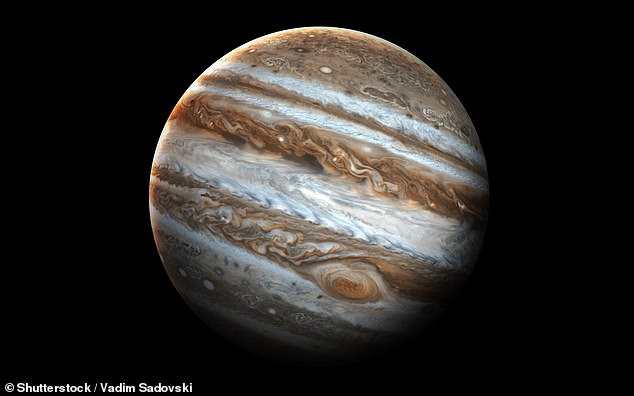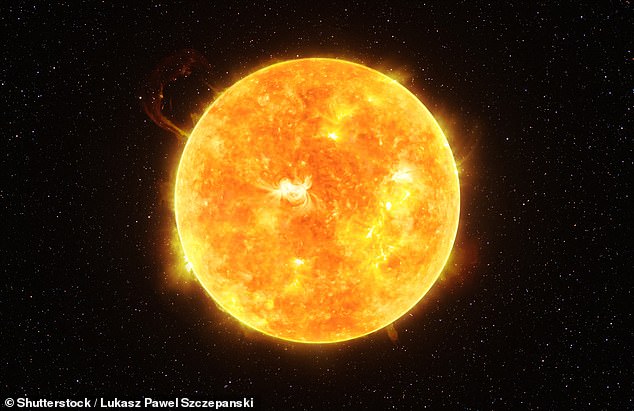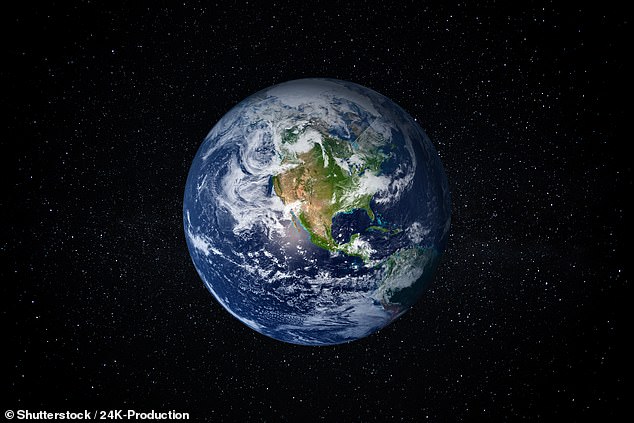What do planets SOUND like? Hear the noises picked up by Nasa satellites as they passed every planet
>
From the mighty bellow of Jupiter to the gusty howl of Mars’ surface, our celestial neighbours are anything but noiseless.
So what do the planets sound like? To reveal the elusive ‘sounds’, scientists converted the radio emissions collected across the various missions into sound waves.
Hear the chilling cacophony of plasma waves and every other planet in our mammoth solar system in the video below.
The collection includes everything from the roaring warble of lightning on Jupiter to the eerie boom of starlight.
Scroll down for video
From the mighty bellow of Jupiter to the gusty howl of Mars’ surface, our celestial neighbours are anything but noiseless

The collection includes everything from the roaring warble of lightning on Jupiter to the eerie boom of starlight
NASA’s Perseverance rover has been recording the ‘eerie sounds of Mars’ since it arrived in February 2021.
Sounds from the Red Planet have been made possible thanks to a pair of microphones on the rover that make it like ‘you’re really standing there,’ NASA said.
The rover has been trundling in the Jezero crater for eight months, searching for signs of ancient life, while also taking stunning photographs and recording sound.
Perseverance is the first craft to record the sound of the Red Planet, and as well as letting us hear wind on another world, it provides information on the atmosphere.
Analysing the sounds of Mars revealed it has ‘strong bass vibrations,’ say researchers from L’Institut de Recherche en Astrophysique et Planétologie in Toulouse, France.
Audio recordings have also helped NASA engineers monitor the engines, wheels and general running of both Perseverance and the Ingenuity helicopter.
NASA also captured haunting sounds coming from the upper atmosphere of Venus during a close flyby of the Parker Solar Probe launched to study the sun.
The natural radio signal is helping scientists study the atmosphere of ‘Earth’s less hospitable twin,’ according to the NASA team responsible for the probe.
The space agency captured the sounds while the Parker probe was making its ‘closest-ever flyby’ of the planet, travelling at just 517 miles above the surface.
NASA’s Goddard space centre is running the solar probe, which made its third flyby of Venus on July 11, 2020, when it detected the radio signal and its eerie soundtrack.

In 2019 astronomers have recorded for the first time the eerie warbling ‘song’ sung by the Earth’s magnetic field when hit by a storm of charged particles sent from the Sun

The ‘tune’ is a sonic version of the stunning aurora light show that can be seen near the poles when charged particles interact with the Earth’s atmosphere
In 2019 astronomers have recorded for the first time the eerie warbling ‘song’ sung by the Earth’s magnetic field when hit by a storm of charged particles sent from the Sun.
The ‘tune’ is a sonic version of the stunning aurora light show that can be seen near the poles when charged particles interact with the Earth’s atmosphere.
The ‘song’ was made audible by experts from the European Space Agency (ESA), who analysed the magnetic waves produced as these ‘solar winds’ buffet the Earth.
They turned the results into audible frequencies, producing an unusual noise they described as being more like ‘the sound effects of a science fiction movie than a natural phenomenon.’
The psychedelic song was identified after the team sent four spacecraft through the so-called ‘foreshock’ region of the Earth’s magnetic field, which faces the Sun and is the first part to be impacted by incoming solar storms.
Normally, the constant flow of charged particles that makes up the solar wind causes the foreshock to emit simple magnetic waves that — when converted into audio waves — sound something like a single, low musical note.
When a solar storm strikes the Earth, however, the impact of it against the magnetic field’s foreshock causes this ‘music’ to rise in pitch — and become far more complex.
In the same year NASA released a chilling compilation of the ‘sounds’ of space, bringing to life the radio emissions captured by its spacecraft as they journey across the solar system.
The space agency released its ‘Spooky Sounds from Across the Solar System’ playlist ahead of Halloween.
The compilation included 22 snippets of ‘space sounds,’ revealing a stunning new perspective on the planets and other mysterious objects in our solar system.
‘Soaring to the depths of our universe, gallant spacecraft roam the cosmos, snapping images of celestial wonders,’ NASA said.
‘Some spacecraft have instruments capable of capturing radio emissions. When scientists convert these to sound waves, the results are eerie to hear.’
The list includes a clip from when the Juno spacecraft crossed the boundary of Jupiter’s magnetic field on June 24, 2016, capturing its remarkable encounter with the bow shock over two hours.
It also reveals the surf-like roar of plasma waves rippling across space, captured EMFISIS instrument aboard NASA’s Van Allen Probes.
And, the playlist contains numerous examples of Saturn’s radio emissions, gathered by its now terminated Cassini spacecraft.
